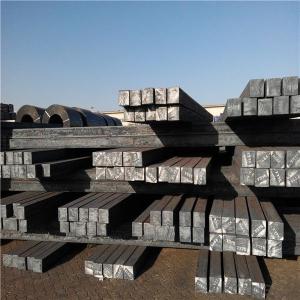Steel Billet high quality hot rolled in Best Price
- Loading Port:
- Dalian
- Payment Terms:
- TT OR LC
- Min Order Qty:
- 1000 m.t.
- Supply Capability:
- 15921 m.t./month
OKorder Service Pledge
OKorder Financial Service
You Might Also Like
Item specifice
Steel billets have distinct characteristics as compared with already furnished steel bars and products. Billets
have a specific grain structure, which enables the metal to be processed more intricately. Steel billets are also
known for their malleability and ductility, especially when exposed to varying temperatures during shaping and
molding.
Billet: equal cross section width and height, or a huge difference, mainly used for rolling steel, wire rod. ,
Gade:
Standard | C(%) | Mn(%) | S(%) | P(%) | Si(%) |
Q195 | ≤0.12 | ≤0.50 | ≤0.040 | ≤0.035 | ≤0.30 |
Q235 | ≤0.20 | ≤1.40 | ≤0.045 | ≤0.045 | ≤0.35 |
Q275 | ≤0.22 | ≤1.50 | ≤0.045 | ≤0.045 | ≤0.35 |
20MnSi | 0.17-0.25 | 1.2-1.6 | ≤ 0.050 | ≤ 0.050 | 0.40-0.80 |
3SP | 0.14-0.22 | 0.40-0.85 | ≤ 0.050 | ≤ 0.040 | 0.05-0.15 |
5SP | 0.28-0.37 | 0.50-1.00 | ≤ 0.050 | ≤ 0.040 | 0.15-0.30 |
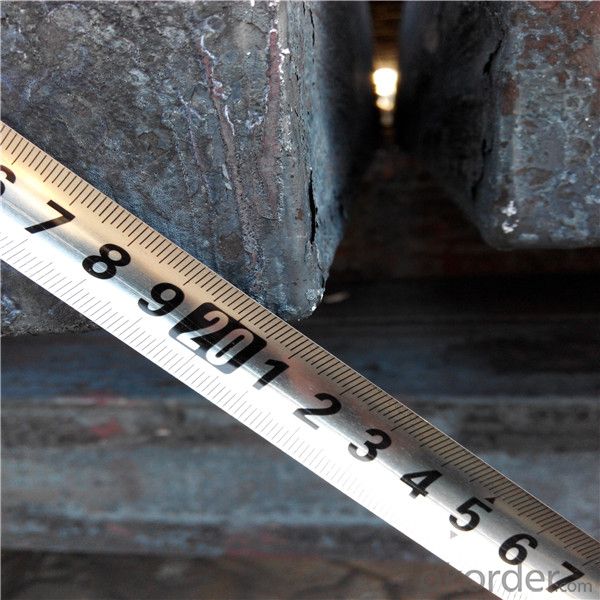
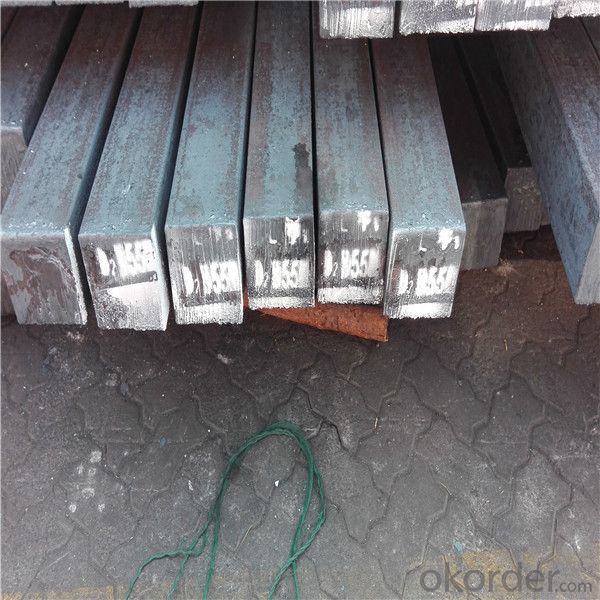
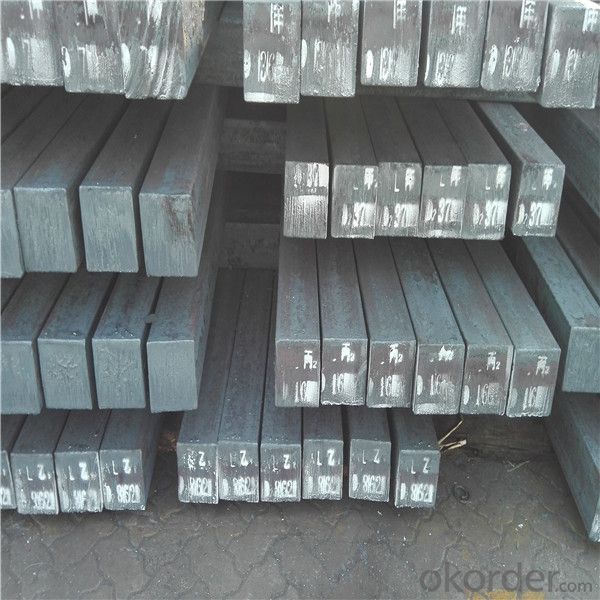
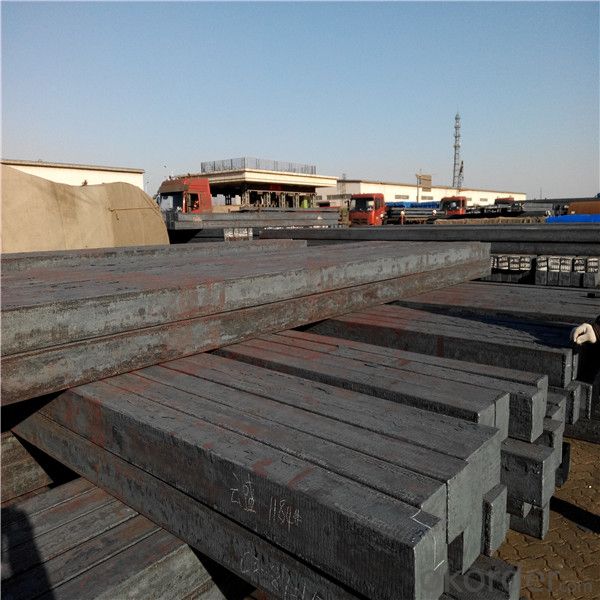
Other Specifications
Squar Tolerance: ±4
Length Tolerance: +100mm
Romboidity/Difference Diagonals: no more than 0.7%
Camber: no more than 1.5%(%)
Twist: no more than 3 degrees per 1 meter length
Our Advantage
* Professional Personnel of Steel Trading
* Strong Steel Industry Background
* Conveniently Geographic Location
Our Commitment
* Sincere, Practical, Efficient and Developing
* High Quality Steel Production
* Competitive Price and Timely Delivery
Packing :
Within 30 days
1.Standard export package
2.In bundles with steel strips
3.As the requirements of the customers
FAQ:
Q: How to get quotation?
A: When we receive your detailed enquiry, we will set the best price based on standard,
steel grade, outer diameter, wall thickness, quantity, country.
And we will send quotation to your mailbox.
Q:How to guarantee the quality of the products?
A:We have established the international advanced quality management system,every link from raw material
to final product we have strict quality test;We resolutely put an end to unqualified products flowing into the market.
At the same time, we will provide necessary follow-up service assurance.
Q:How long can we receive the product after purchase?
A :In the purchase of product within three working days, We will arrange the factory delivery as soon as possible.
The pecific time of receiving is related to the state and position of customers.
- Q:How are steel billets classified based on their chemical composition?
- Steel billets can be classified based on their chemical composition using different grading systems. One common classification method is based on the carbon content of the billets. This method categorizes steel billets into three main groups: low carbon steel billets, medium carbon steel billets, and high carbon steel billets. Low carbon steel billets typically have a carbon content of less than 0.25%. These billets are known for their excellent ductility and weldability. They are commonly used in applications that require good formability and low strength, such as construction materials and automotive components. Medium carbon steel billets usually have a carbon content ranging from 0.25% to 0.60%. These billets have improved strength and hardness compared to low carbon steel billets. They are commonly used in applications that require higher strength, such as machinery parts, shafts, and gears. High carbon steel billets have a carbon content greater than 0.60%. These billets are known for their exceptional strength and hardness. They are commonly used in applications that require high wear resistance, such as cutting tools, springs, and knives. Apart from the carbon content, other chemical elements present in the steel billets can also affect their classification. For example, the presence of alloying elements like chromium, nickel, and molybdenum can enhance the properties of the steel, such as corrosion resistance or heat resistance. Steel billets can be further classified based on the specific alloying elements present and their concentrations. Overall, the classification of steel billets based on their chemical composition allows for better understanding and selection of the appropriate material for specific applications, ensuring the desired properties and performance of the final product.
- Q:How are steel billets used in the production of steel cables?
- Steel billets are used in the production of steel cables by being heated and then passed through a series of rollers to shape them into thin, long strands. These strands are then twisted together to form the cables, which are used for various applications such as suspension bridges, elevators, and construction projects. The high strength and durability of steel billets make them ideal for producing strong and reliable steel cables.
- Q:What are the different surface defects found in tool steel billets?
- Some common surface defects found in tool steel billets include scale, cracks, pits, and surface decarburization. Scale refers to the formation of oxidation layers on the surface of the billet, often caused by exposure to high temperatures during processing. Cracks can occur due to improper cooling or excessive stress during forging. Pits are small depressions or cavities on the surface, which can be caused by impurities or improper handling. Surface decarburization is the loss of carbon at the surface, resulting in reduced hardness and wear resistance.
- Q:Can steel billets be used for making hand tools?
- Yes, steel billets can be used for making hand tools. Steel billets are essentially semi-finished steel products that are typically used for further processing and shaping into different forms. Hand tools such as wrenches, pliers, hammers, screwdrivers, and many others can be manufactured from steel billets. Steel is a popular choice for hand tool manufacturing due to its strength, durability, and resistance to wear and tear. Steel billets can be forged, machined, or heat-treated to create the desired shape, size, and hardness required for hand tools. The versatility of steel allows it to be easily molded into various tool designs, providing the necessary strength and functionality. Furthermore, steel hand tools offer several advantages over tools made from other materials. Steel's high tensile strength ensures that the tools can withstand high levels of force and pressure without breaking or deforming. Its resistance to corrosion and rusting makes steel tools suitable for both indoor and outdoor use, even in harsh environments. In conclusion, steel billets can indeed be used for making hand tools. The strength, durability, and versatility of steel make it an ideal material for manufacturing a wide range of hand tools that can withstand heavy usage and provide long-lasting performance.
- Q:How does the quality of steel billets affect the quality of the final product?
- The quality of steel billets plays a critical role in determining the quality of the final steel product. Steel billets are semi-finished products, typically produced through a continuous casting process, which serve as the raw material for various downstream steel products. Firstly, the chemical composition of the steel billets greatly impacts the final product's quality. Steel is an alloy composed primarily of iron and carbon, with the addition of various other elements such as manganese, chromium, nickel, and others. The presence and precise amount of these alloying elements in the billets significantly influence the final steel's properties, including strength, hardness, ductility, and corrosion resistance. Any variation or deviation in the chemical composition of the billets can lead to an undesirable alteration in the final product's characteristics. Secondly, the physical properties of steel billets, such as their size, shape, and internal structure, directly affect the quality of the final steel product. The size and shape of the billets determine the dimensions and geometry of the end product, ensuring proper fit and functionality. Furthermore, the internal structure of billets, including the absence of defects like cracks, voids, or inclusions, is crucial for producing high-quality steel products. Any imperfections present in the billets can propagate and cause failures, reducing the strength and overall quality of the final product. Additionally, the manufacturing process of steel billets also influences the final product's quality. Factors such as cooling rate, casting speed, and temperature control during the continuous casting process can impact the microstructure and overall homogeneity of the billets. Proper process control and optimization are essential to ensure that the billets possess the desired metallurgical properties, such as uniform grain structure and absence of segregation or impurities. Moreover, the quality of steel billets directly impacts the efficiency and cost-effectiveness of subsequent steel processing operations. If the billets have a high degree of dimensional accuracy, it reduces the need for excessive material removal during subsequent machining or shaping processes. This results in higher material yield, reduced waste, and improved overall productivity. In summary, the quality of steel billets significantly influences the quality of the final steel product. The chemical composition, physical properties, and manufacturing process of billets all play crucial roles in determining the end product's characteristics. By ensuring high-quality steel billets, manufacturers can produce steel products that meet stringent industry standards, possess desired mechanical properties, and exhibit superior performance in various applications.
- Q:What are the different methods of steel billet surface shot blasting?
- There are several different methods of steel billet surface shot blasting that are commonly utilized in various industries. These methods include: 1. Wheel blasting: This method involves using a wheel mechanism to propel abrasive particles onto the surface of the steel billet. The wheel rotates at a high speed, creating centrifugal force that propels the abrasives towards the billet, effectively removing any impurities or surface contaminants. 2. Air blasting: Air blasting is another commonly used method, where compressed air is used to propel abrasive particles onto the surface of the steel billet. The compressed air creates a high-pressure stream that propels the abrasives, effectively cleaning and preparing the surface. 3. Wet blasting: This method involves combining water with the abrasive particles before propelling them onto the steel billet surface. The addition of water helps to minimize dust and control the heat generated during the blasting process. Wet blasting is often used for steel billets that require a more delicate or controlled surface cleaning. 4. Shot peening: Shot peening is a specialized method used to improve the fatigue life and strength of the steel billet surface. In this process, small steel shots are propelled onto the surface with controlled intensity, creating compressive stresses that help to prevent crack initiation and propagation. 5. Vacuum blasting: Vacuum blasting is a method that combines a blast nozzle with a vacuum system. The abrasive particles are propelled onto the steel billet surface, and simultaneously, a vacuum system removes the spent abrasive particles and any loose debris. This method ensures a clean and dust-free environment during the blasting process. It's important to note that the choice of method will depend on various factors such as the type and condition of the steel billet, the desired surface finish, the level of contamination, and the specific requirements of the industry. Each method has its own advantages and limitations, and selecting the appropriate method is crucial to achieve the desired surface quality and cleanliness.
- Q:What are the different finishing processes used for steel billets?
- There are several different finishing processes used for steel billets to achieve the desired surface quality and dimensions. These processes include: 1. Hot rolling: This process involves passing the steel billets through a series of heated rollers to reduce their thickness and shape them into the desired profile. It can be used to produce a variety of finished products, such as bars, rods, and structural shapes. 2. Cold drawing: In this process, the steel billets are pulled through a series of dies at room temperature to reduce their cross-sectional area and improve their surface finish. Cold drawing is commonly used to produce high-quality steel bars and wires with precise dimensions and a smooth surface. 3. Peeling: Peeling is a machining process in which a thin layer of material is removed from the surface of the steel billets using a cutting tool. This process helps to improve the surface finish, remove any defects, and achieve tight dimensional tolerances. 4. Grinding: Grinding involves using an abrasive wheel or belt to remove material from the surface of the steel billets. It is commonly used to remove surface defects, such as scale and rust, and to achieve a smooth and uniform surface finish. 5. Polishing: Polishing is a finishing process that involves using abrasive materials, such as polishing compounds and buffing wheels, to create a smooth and reflective surface on the steel billets. It is often used to enhance the aesthetic appeal of the finished product and improve its resistance to corrosion. 6. Coating: Coating is a process in which a protective layer is applied to the surface of the steel billets to improve their resistance to corrosion and other environmental factors. Common coating methods include galvanizing, where a layer of zinc is applied to the surface, and painting, where a layer of paint or other protective material is applied. Overall, these finishing processes are essential in ensuring that steel billets meet the required specifications and standards for their intended applications. They help to improve the surface finish, dimensional accuracy, and overall quality of the finished steel products.
- Q:What are the different types of steel billet defects?
- There are several different types of steel billet defects that can occur during the manufacturing process. These defects can have an impact on the quality and performance of the final product. Some common types of steel billet defects include: 1. Surface defects: These are flaws or irregularities that occur on the outer surface of the billet. Examples include cracks, scale, and scratches. Surface defects can weaken the billet and reduce its overall strength. 2. Internal defects: These defects occur within the billet and are not visible on the surface. They can be caused by factors such as non-metallic inclusions, voids, or gas pockets. Internal defects can compromise the structural integrity of the billet and lead to failures or deformations. 3. Segregation: This defect refers to the uneven distribution of alloying elements within the billet. It can result in inconsistent mechanical properties across the billet, leading to variations in strength or hardness. 4. Pipe: Pipe defects occur in the center of the billet and are caused by the formation of a cavity during solidification. This defect can weaken the billet, making it more susceptible to cracking or other forms of failure. 5. Incomplete solidification: This defect occurs when the billet does not fully solidify during the casting process. It can lead to internal cracks or voids, reducing the overall quality and strength of the billet. 6. Surface decarburization: This defect occurs when the surface of the billet loses carbon during the heating or cooling process. It can result in reduced hardness and wear resistance in the final product. It is important for manufacturers to closely monitor and control the production process to minimize the occurrence of these defects. Various techniques such as quality control checks, heat treatment, and proper handling can help prevent or mitigate the impact of these defects on the final product.
- Q:What are the main factors affecting the magnetic properties of steel billets?
- The main factors affecting the magnetic properties of steel billets are composition, microstructure, and processing conditions. Firstly, the composition of the steel billet plays a significant role in its magnetic properties. The presence of certain alloying elements, such as nickel, cobalt, and manganese, can enhance the magnetic properties of steel. These elements align the magnetic domains within the steel, resulting in increased magnetization and improved magnetic properties. Secondly, the microstructure of the steel billet affects its magnetic properties. The grain size, crystal structure, and presence of defects or impurities can influence the magnetic behavior of the material. Finer grain sizes tend to have better magnetic properties due to improved alignment of the magnetic domains. Additionally, a single-phase crystal structure is generally more magnetic than a multi-phase structure. Lastly, the processing conditions during the production of steel billets can impact their magnetic properties. Factors such as temperature, cooling rate, and mechanical deformation can affect the microstructure and, consequently, the magnetic behavior. For example, rapid cooling can result in a finer grain size and better magnetic properties, while mechanical deformation can induce magnetic anisotropy, making the steel more magnetically oriented along a specific direction. In summary, the magnetic properties of steel billets are mainly influenced by the composition, microstructure, and processing conditions. By controlling these factors, manufacturers can tailor the magnetic properties of steel billets to meet specific requirements for various applications, such as in electrical transformers, motors, or magnetic sensors.
- Q:How are steel billets used in the manufacturing of construction scaffolding?
- Steel billets are used in the manufacturing of construction scaffolding as they serve as the primary raw material. These billets are first heated and then passed through a series of processes such as rolling, cutting, and shaping to form the necessary components of scaffolding, including tubes, frames, and joints. The high strength and durability of steel make it an ideal choice for scaffolding, ensuring the safety and stability required for construction workers.
1. Manufacturer Overview |
|
|---|---|
| Location | |
| Year Established | |
| Annual Output Value | |
| Main Markets | |
| Company Certifications | |
2. Manufacturer Certificates |
|
|---|---|
| a) Certification Name | |
| Range | |
| Reference | |
| Validity Period | |
3. Manufacturer Capability |
|
|---|---|
| a)Trade Capacity | |
| Nearest Port | |
| Export Percentage | |
| No.of Employees in Trade Department | |
| Language Spoken: | |
| b)Factory Information | |
| Factory Size: | |
| No. of Production Lines | |
| Contract Manufacturing | |
| Product Price Range | |
Send your message to us
Steel Billet high quality hot rolled in Best Price
- Loading Port:
- Dalian
- Payment Terms:
- TT OR LC
- Min Order Qty:
- 1000 m.t.
- Supply Capability:
- 15921 m.t./month
OKorder Service Pledge
OKorder Financial Service
Similar products
New products
Hot products
Hot Searches
Related keywords
